Quick: What’s the germiest place in your home?
If you think it’s the bathroom, try again: It’s actually the kitchen. But the important thing is to know where the germs are coming from and how to keep them to a minimum, especially during flu season.
Leslie Reichert, known as “The Green Cleaning Coach,” is an expert in removing unwanted germs from places you may not even have thought to look. Staircase railings, doorknobs, faucet handles—they all can harbor large populations of germs. Here’s how Reichert recommends keeping the top offenders as clean as possible.
The Kitchen
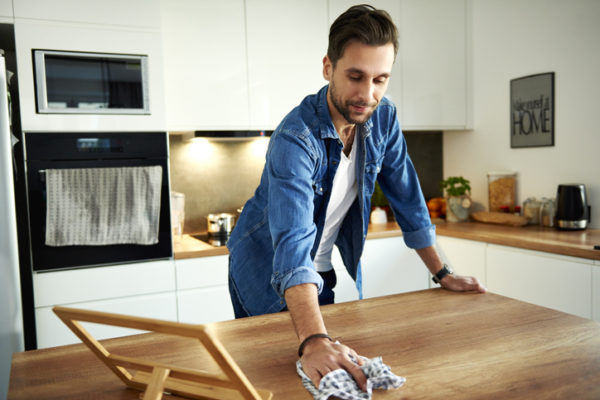 Any battle with germs should start here, says Reichert. After all, this room plays host to more bacteria than any other in the home, according to a study conducted by NSF International, a global-health organization originally called the National Sanitary Foundation.
Any battle with germs should start here, says Reichert. After all, this room plays host to more bacteria than any other in the home, according to a study conducted by NSF International, a global-health organization originally called the National Sanitary Foundation.
Sink
According to the NSF study, kitchen sinks are worse than dog bowls when it comes to incubating germs. To combat the buildup, spray the sink regularly with distilled white vinegar and let it sit for 10 minutes, says Reichert. Sanitize drains monthly with a solution of one teaspoon of household bleach and one quart of water, says the NSF. And don’t forget the faucet handles and dish sponge. “They can contain salmonella or other bacteria from raw meat, vegetables and lettuce,” says Reichert. The EPA recommends microwaving a wet sponge daily (provided it does not contain metal) for two minutes or placing it in the dishwasher.
Coffeemaker
Due to moisture and warm temperatures, a coffeemaker offers ideal conditions for germs, mold and mildew to grow. To keep it clean, pour straight distilled white vinegar into the water reservoir and let it sit for half a day, says Reichert. Then run it through the coffeemaker and run two more pots of water through the system to flush out the vinegar.
Counters And Knobs
After you’re done preparing food, wash countertops with hot, soapy water; then rinse with clean water and apply a bleach/water solution or a sanitizing agent. The same goes for stove knobs—one of the top 10 places for germs to hide, according to the NSF. Remove the knobs once a week, wash and rinse well, then let them dry before putting them back on.
The Bathroom
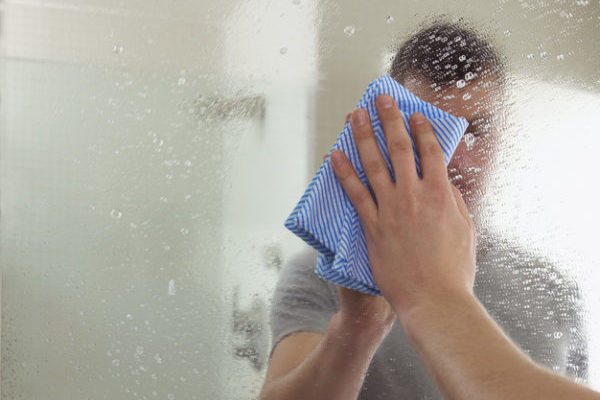 Toothbrush holder
Toothbrush holder
Toothbrush holders may look innocent enough, but they can play host to more germs than your toilet seat, says the NSF. The solution? Choose a holder that’s dishwasher safe, for easy and regular cleaning. Of course, don’t ignore your toothbrush, either. The Centers for Disease Control (CDC) recommends rinsing it thoroughly after each use, storing it upright, and replacing it every 3–4 months.
Toilet
“Unfortunately, there is no way to kill all the bacteria in your toilet,” says Reichert. “Instead, you’ll have to work to keep it clean—and often.” For the toilet-bowl ring, she recommends using a pumice stone. For the bowl, she advises emptying it by shutting off the water and flushing, then using any simple cleaner and a good toilet brush.
Bathtub
To keep germs to a minimum, Reichert offers this unique method: Spray the shower daily with 10 drops of tea-tree oil in 16 ounces of witch hazel. First, wipe the entire shower/tub area with a squeegee or a microfiber cloth; then spray it with this solution.
The Bedroom
Bedding
“Sheets are easy,” notes Reichert—just wash them weekly in hot water and dry on high heat. For quilts and blankets, she suggests putting them in the dryer on high heat. “You don’t even have to put them through the washer if the dryer heat is high enough,” she explains. “Put them in the dryer for 30 minutes, along with a damp towel. The steam will knock out the dander and dust, and the heat will kill bacteria.” She recommends the same treatment for pillows.
The Living Room
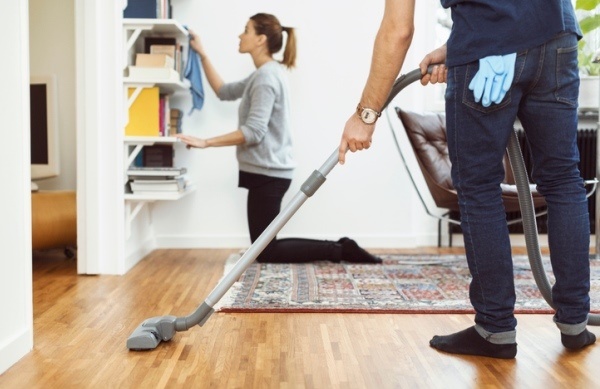 Remote Controls
Remote Controls
Germs can hide in your TV remotes or game controllers, says the CDC, and Reichert recommends disinfecting these devices with a cotton swab and hydrogen peroxide. “If someone is sick, put the remote in a sealed bag and have them use the controls through the bag. That way it’s easy to wipe after it’s used,” she says.
Furniture
Reichert wipes leather furniture with a microfiber cloth, which picks up dust and germs without needing any disinfectants. She sprays fabric furniture and rugs with vodka; this kills the bacteria and eliminates odors, she says.
Carpets
Welcome mats, area rugs and wall-to-wall carpeting can collect hard-to-remove dust, dirt and germs, which can then trigger allergies and asthma. Small area rugs can be laundered or dry-cleaned making them safer than wall-to-wall carpeting, according to the EPA. If you do have wall-to-wall carpeting, Reichert suggests having it steam-cleaned seasonally to keep it fresh year-round.
By Donna Zucker
A clean home is a happy and safe one. Whether you rent or own, find out which home insurance policy could best protect your property. Get a fast, free quote today through the GEICO Insurance Agency.
Next article: 5 Ways To Beautify Your Home In 15 Minutes

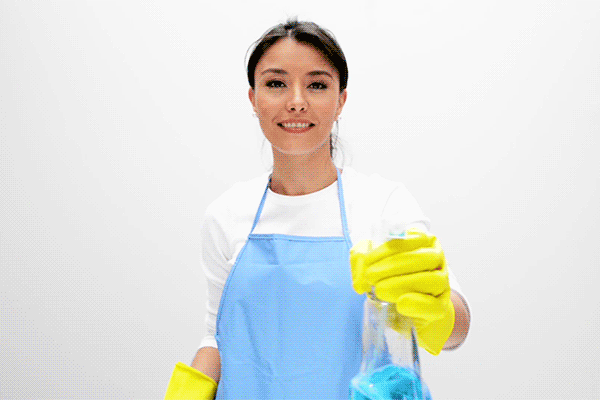


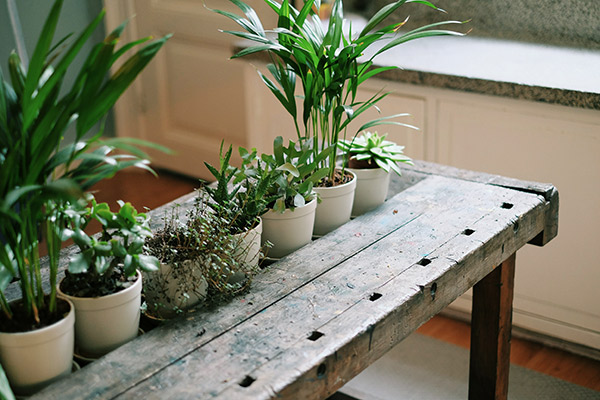
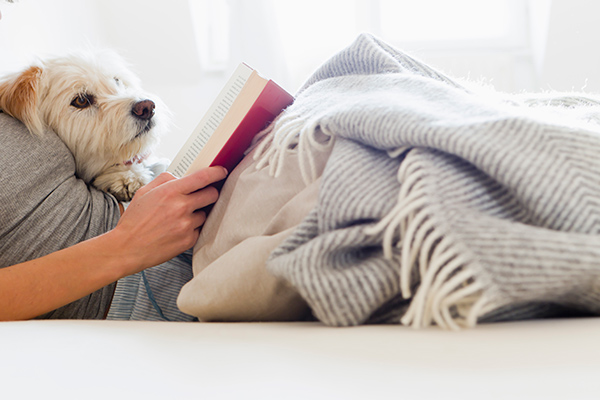
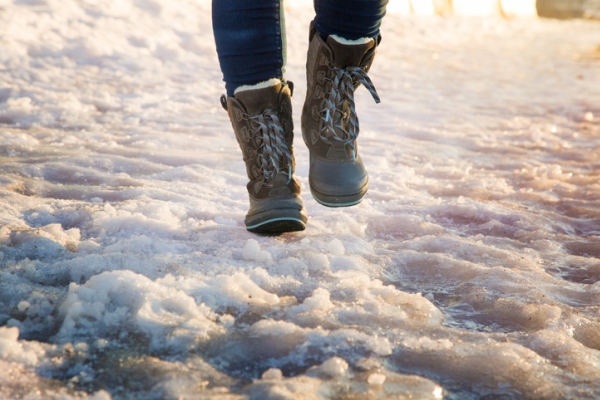
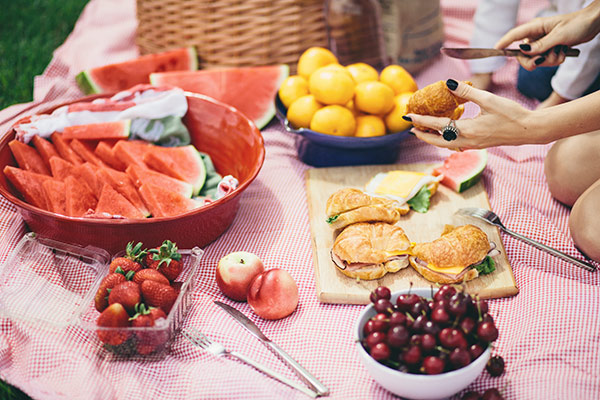


Martin says,
A recent report said microwaving sponges kills the harmless bacteria but does nothing against the dangerous ones.
https://www.nytimes.com/2017/08/04/science/sponges-bacteria-microwaving-cleaning.html?emc=eta1
Cleaning a Dirty Sponge Only Helps Its Worst Bacteria, Study Says
BY JOANNA KLEIN
Researchers found that microwaving, boiling or throwing used sponges in the dishwasher encouraged the proliferation of its strongest microbes.
Nita Haynes says,
Wonderful article.
I found it especially good because I have a compromised immune system due to cancer.
I also will share with my granddaughter.
Thank you.
PLD says,
What’s the best way to defeat H-pylori? I soak my dishes in steamy, soapy water for thirty minutes and then place them in the dishwasher. I’m a super germaphob but I keep testing positive for that pathogen.
Dora J. Mose says,
I must be doing my cleaning right. As I do all this to begin with, was taught by my Mom and Grandmother. My Grandmother who kept house during the depression era, used these cleansers. So, news flash folks they are not new age! They’ve been around for a while. This is one of those things of why re invent the wheel? Stick with what works.
Nita Haynes says,
Grandmother and Mother always gave great advice and we listened..
Pat says,
I just read another article that said to add vodka to a white vinegar/water solution. The vinegar sanitizes and the vodka both cleans and sanitizes. 1/4 cup each vinegar and vodka to 2 cups water.
Ginger Miller says,
Nice to know this.Thank You this is good to know.
Steven Goldstein says,
Maybe I’m one of the lucky ones…… No anti bacterial anything in my house, I never use Purell or any other solution: not on my body, not on my keyboard, remote or hand scanner at work. I defrost food just as my mother did—on the counter [ yes, even chicken] I don’t cook or store food in plastic, and eat little processed foods. Oh, 2-2 1/2 hours a week doing resistance exercises, and a maximum 1800-2000 calories a day.
We’ve become to “clean”. Most bacteria are beneficial or inert.
BTW, I haven’t been sick, not even a cold in over 24 years. I’ll be 64 in June.
Cynthia says,
Amen Steven!
And I still drink the raw cow & goat milk I’ve been drinking since a child, much to the “horror” of many. If you want to have some fun, go to a Whole Foods and ask a dairy associate where their raw milk is. Be prepared for a diatribe about how they don’t carry it “for your protection”…. Hysterical!
Spencer says,
I found these informations to be very instructional
Elizabeth James says,
I use white vinegar and soda in all my sinks especially the disposal. Also pour some in the dish washer after putting away clean dishes. Always smells fresh and clean. Instead of CLR to clean shower heads vinegar will do it nicely.
Nancy Dinkelman says,
These are all great suggestions. I might also suggest that if you use “wipes” that you read the fine print to make sure you have eliminated the bacteria instead of leaving all the chemicals. Wipes say “use enough wipes to keep the surface visibly wet for 4 to 10 minutes” time depends on brand. Then, if you are going to prepare food on the surface to wash the surface after the wipes to eliminate the chemicals/pesticides in the wipes. If you noticed the word pesticide…yes, that’s how strong the chemicals are. Our government considers the strength of chemicals in wipes to be a pesticide. That’s why many states have banned their use in the schools.
Jacqueline Cavero says,
Great Information, also about cleaning the Coffee Maker, very good suggestions.
Thank you
Janet says,
Caution: Don’t use vinegar on marble! It will stain.
Sharon Stacey says,
Very good information. About cleaning the coffee maker, how much white vinegar should I use for a 10 cup coffee maker? A cup, a tablespoon, teaspoon, 8 ounce bottle, how much? What is tea-tree oil and where can I buy it.
Sami says,
You can find Tea Tree Oil wherever you find essential oils, vitamins, even Wal-Mart has it now.
Gordon says,
Thanks for sharing marathon inspiration.
Susan Butler says,
Great suggestions. Thanks.
Faye Gamstetter says,
Would like to print this handy information about germs in the home. Would like to keep on file but I can not copy to send to my printer. Any suggestions?
Jacqueline Cavero says,
Hi ,what I did was, I copied it and put it on Microsoft Word, and then I printed.
Hope it helps.
Cornelia M. Martin says,
Pen and paper works wonders for notes!
Gloria Strong says,
Very interesting. Read the one about cleaning. Have to buy some white vinegar.
Alice Schrade says,
I use white vinegar to clean everything ( kitchen, bathroom even wooden floors )including my yoga mat which I spray on both sides and shake and dry outside.
Sami says,
Cider vinegar works just as well!